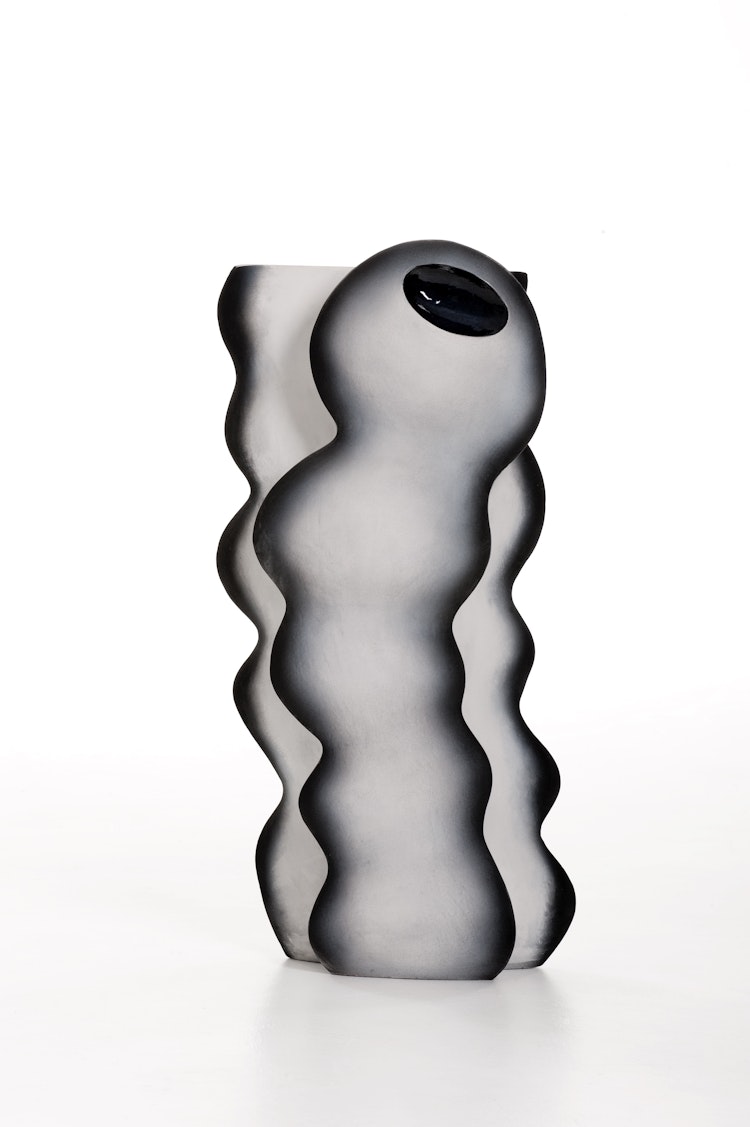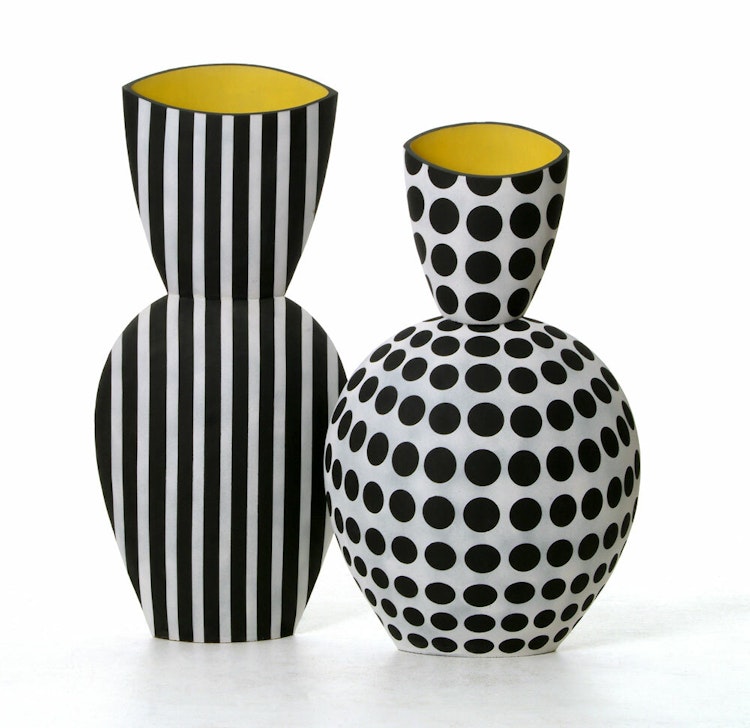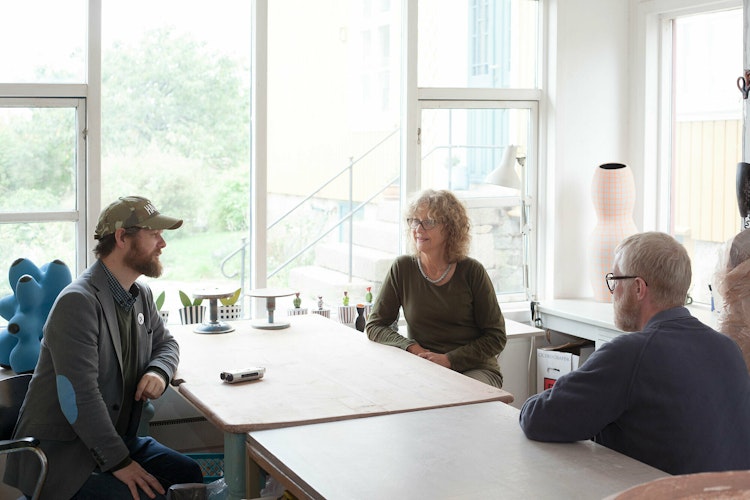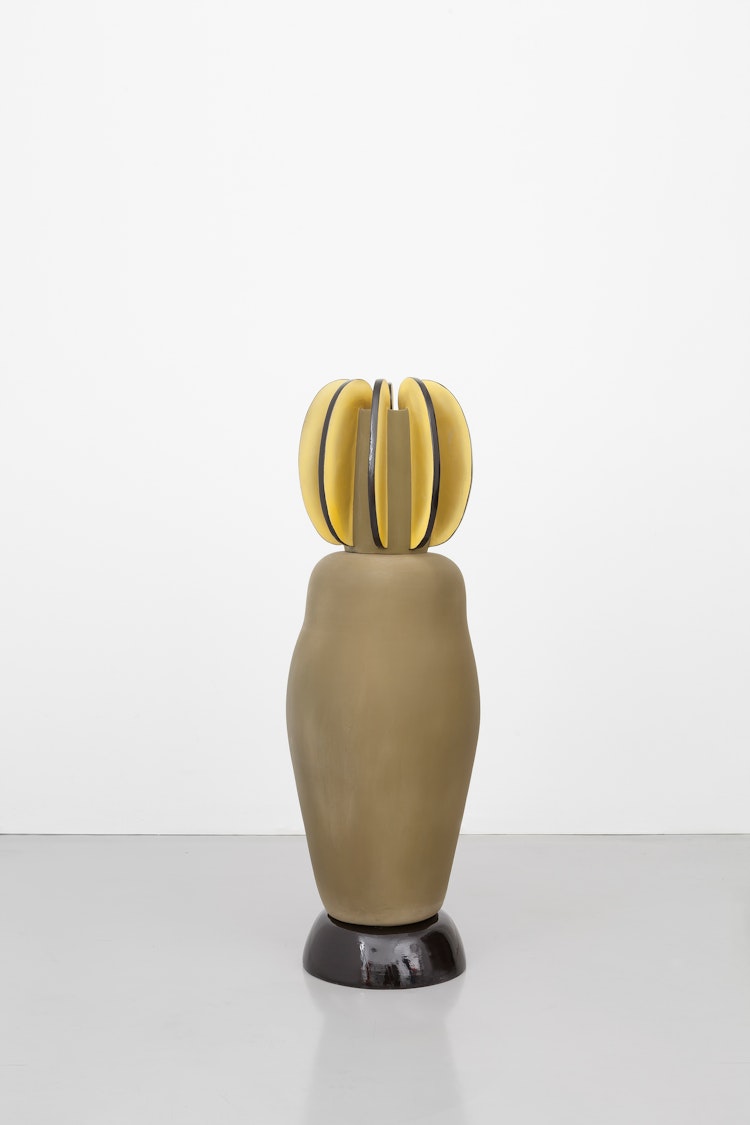

André Gali
In this interview André Gali talks with ceramic artist Elisabeth von Krogh about caricatured expressions, optical illusions and the vessel as form.
The artist Elisabeth von Krogh (b. 1947) works with ceramic media in strong colours and striking forms. Her main theme could be said to be the vase as an art-historical subject. Rather than focusing on the functional aspect of vases, she is more interested in blowing them up in size and playing with their forms. The colours of her vases are manipulated to the extent that they sometimes have a caricatured and cartoonish expression, perhaps suggesting that they are modelled on two-dimensional drawings. The art historian Jorunn Veiteberg has pointed out that von Krogh made a career breakthrough at the same time as Post-Modernism gained a strong foothold in Norway. It was then that people felt free to appreciate ‘strong colours, decoration, style quotations and, not least, humour’.1 Von Krogh’s most famous work is a still-life installation of large colourful vases at Oslo Airport. We come across several similar vases when visiting her studio on the island of Nøtterø, an hour’s drive south of Oslo. Von Krogh has lived here with her husband, also an artist, since the late 1970s. Some of these works will be on show at Design Miami.


Elisabeth von Krogh graduated from the National College of Art and Design in Oslo in 1971 and comes from a family with several artists:
- My mother attended the art academy, my aunt was a well-known portraitist, and my grandfather was an architect. So I grew up in an environment with lots of art and craft. My mother almost forced me to attend art school, and I started out studying design. I eventually gained some familiarity with the school’s ceramics department and was eager to study ceramics. I had to learn to throw pots, so went to Bergen to study with Odd and Kari Gjerstad.
It was then that I started making models of large flower-like forms. Among other things, I worked with cactus-inspired forms and blew them up in size. When I was commissioned to make the installation at Oslo Airport, and it was decided that it should have a strict expression, I started making the large vases.

After art school, von Krogh established her workshop at the artist collective ‘Frysja’ in Oslo. She produced functional glazed ceramics such as vases, candlesticks, cups and the like. The 1960s and ‘70s were marked by increased political involvement in Norway, and during this period von Krogh did not sit on the side-lines but produced several series of politically charged works. Two of von Krogh’s colleagues at Frysja were the textile artist Bente Sætrang and the glass artist Ulla Mari Brantenberg. They had been in Africa in the 1980s and returned home with pictures from their trip. These inspired Von Krogh to use subject matter such as palm trees, parrots and giraffes in her works. She also drew inspiration from Punk culture and began using safety pins as elements in her ceramics. These were presented at her debut exhibition at the gallery ‘Kunstnerforbundet’ in Oslo in 1982. The show won rave reviews, with one critic describing it as ‘New Wave in the artist association’s gallery!’
Towards the late 1980s, von Krogh still worked primarily with functional ceramics – cups, bowls and so forth – but after receiving the government’s guaranteed income for artists in 1991, she was able to experiment more. Soon her works increased in size, and functionality gave way to a more sculptural expression:
- It was then that I started making models of large flower-like forms. Among other things, I worked with cactus-inspired forms and blew them up in size. When I was commissioned to make the installation at Oslo Airport, and it was decided that it should have a strict expression, I started making the large vases.
Three vessels by Elisabeth von Krogh. Photo: Øystein Thorvaldsen
The vase is the starting point, but several of the recent productions tend towards sculpture. It’s important to me that viewers clearly see that these are made of clay, that they are ceramic, that they don’t look like anything else.
The commission for Oslo Airport (completed in 1998) became an occasion for von Krogh to experiment with caricatured expression. In consultation with the architect, it was decided that the expression should be strict. She culled inspiration from how vessels are drawn in cartoon series, how a form bulges out and how the mouth of a jar can be cut at an angle, giving viewers the feeling of looking downwards and inside the object, even though they are looking at it directly from the front. This quality continues in her more recent works, in combination with optical experiences created with sharp contours, stripes and circles:
- In 2005 I made two large vessels and used them to experiment with optical illusions. I painted them black and white: the one has painted stripes and almost looks like it’s made of carton, absolutely flat; the other is painted with circles and seems to bulge outwards and be perfectly spherical. These two vessels actually have identical shapes.
As stated, Veiteberg has described von Krogh as a Post-Modernist, but what does the artist herself think? What is the object of her visual inquiry?
- It’s a play with form. I’m always trying to make something for the eye. I want to tell viewers about the form and the material. I think primarily of the visual context and draw inspiration from many sources, for instance, from Modernism, Le Corbusier and Leger. As one of my teachers used to say: ‘Remember that a form should be interesting regardless of the angle from which you see it.’ And in the words of my ornamentation teacher: ‘Remember the negative space!’ These words of advice really got me thinking and still play a role in how I think and work with form today.
The space and the context in which her works are exhibited also play crucial roles in how von Krogh approaches artistic production:
- When I worked on the installation for Oslo Airport, many of the decisions were made based on how the objects would be presented. I actually like this way of working a lot – that the surroundings provide some of the premises.
Von Krogh now focuses almost exclusively on vases – as art historical subject matter to be explored, developed and viewed from different perspectives:
- I think of the vase or vessel mostly as a form. Some vases are strict while others can be more organic. And I work in diverse sizes. The vase is the starting point, but several of the recent productions tend towards sculpture. It’s important to me that viewers clearly see that these are made of clay, that they are ceramic, that they don’t look like anything else.


